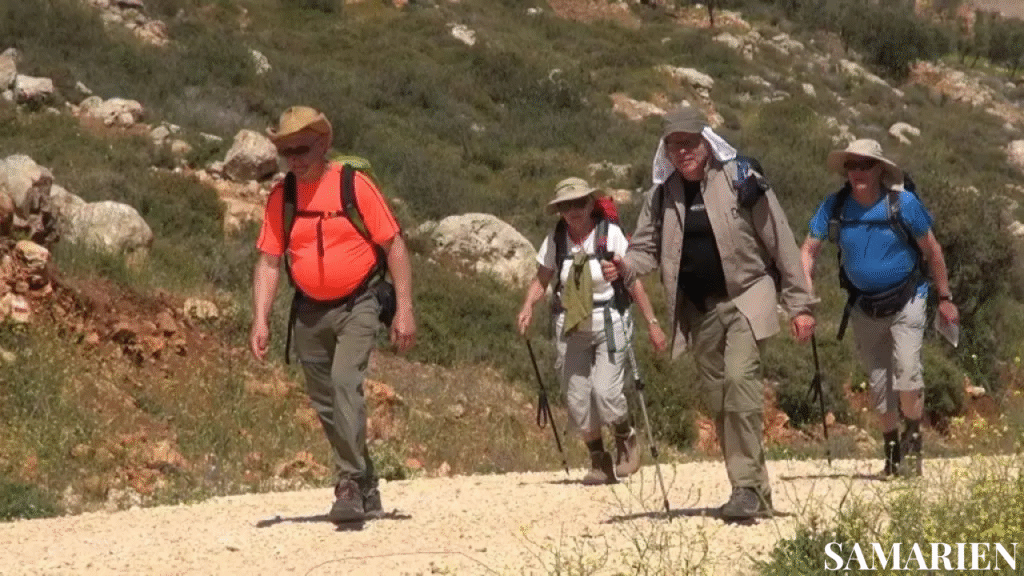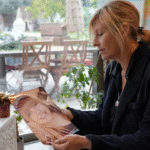Nestled in the heart of the ancient Near East, Samarien—also known as Samaria—is a region steeped in deep historical, cultural, and religious roots. Often overshadowed by its more famous neighbors like Jerusalem or Galilee, Samarien holds a unique position in the historical narratives of Judaism, Christianity, and the broader Middle East. With a name that resonates in biblical texts and archaeological records, Samarien offers a rich tapestry of stories, traditions, and enduring significance.
The land of Samarien has long been a focal point of political, religious, and cultural convergence. From its role in ancient Israelite history to its modern-day heritage preservation efforts, this region continues to capture the interest of historians, theologians, and travelers alike. Exploring Samarien allows us to uncover a chapter of history that reveals not only conflicts and conquests but also cooperation, resilience, and spiritual legacy.
This article delves into the historical landscape, religious importance, cultural identity, and archaeological relevance of Samarien. Whether you’re a history enthusiast, a student of theology, or simply curious about the lesser-known regions of the Holy Land, this in-depth look will shed light on one of the world’s oldest inhabited regions that continues to influence beliefs and identities today.
The Historical Landscape of Samarien
Samarien is geographically situated in the central part of ancient Palestine, bordered by Judea to the south and Galilee to the north. Today, this area roughly corresponds to the northern West Bank, encompassing modern cities like Nablus and Sebastia. Historically, its central position made it a vital corridor for trade, travel, and military campaigns, contributing to its strategic importance in regional politics.
Over centuries, the borders of Samarien have shifted dramatically. During the time of the divided Kingdoms of Israel and Judah, Samarien became the capital of the northern kingdom, known simply as Israel. This political significance brought prosperity but also vulnerability, as it became a target for empires seeking dominance in the region. Its mountainous terrain provided natural defense yet also isolated communities, leading to unique cultural developments.
During the Roman period, Samarien was renamed Sebaste by Herod the Great, who rebuilt the city in honor of Emperor Augustus. The city served as both a Roman administrative hub and a religious center. This constant flux in governance—from Israelites to Assyrians, Babylonians, Greeks, and Romans—shaped the multicultural character of the region, leaving behind a diverse archaeological and historical footprint.
Early Inhabitants and Settlements
The roots of settlement in Samarien trace back to the Bronze and Iron Ages. Archaeological evidence reveals fortified towns, intricate pottery, and religious altars indicating organized communities and religious practices. Samaria (modern Sebastia) was a central urban development founded by King Omri, a significant ruler of the northern kingdom, who established it as his capital.
The Assyrian conquest in the 8th century BCE marked a turning point in Samarien’s demographic composition. Many Israelites were exiled, and foreign populations were resettled in the region, resulting in a blend of cultures and beliefs. This fusion would eventually give rise to the Samaritan people, who maintained a distinct identity while also retaining many Israelite traditions.
Roman occupation brought additional changes. Temples, roads, and amphitheaters were built, and the population became increasingly diverse. Despite these transformations, many aspects of the local culture persisted, creating a unique blend of ancient Semitic traditions with Hellenistic and Roman influences. Samarien, thus, stands as a testament to survival and adaptation through centuries of conquest and change.
Religious and Biblical Significance
Samarien figures prominently in the Old Testament as the stronghold of the northern Kingdom of Israel. Prophets like Amos and Hosea directed their messages of reform and warning to its rulers. The city of Samaria was portrayed as both a political power center and a spiritual battleground, often accused of idolatry and deviation from monotheism.
The fall of Samaria to the Assyrians in 722 BCE was seen as divine punishment for the kingdom’s unfaithfulness. This event catalyzed a significant religious and ethnic transformation of the region. The narrative tension between Samaria and Jerusalem became a recurring theme in biblical texts, symbolizing a broader conflict between northern and southern tribes.
Biblically, Samarien became associated with spiritual divergence. However, it also emerged as a site of continued worship and sacrifice. The presence of Mount Gerizim, revered by Samaritans as the true holy mountain, underscored the ongoing religious rivalry and theological disputes between Jews and Samaritans that would carry into later centuries.
Samaritanism vs. Judaism
One of the most intriguing outcomes of Samarien’s complex history is the rise of Samaritanism, a religion closely related to but distinct from Judaism. Samaritans claim descent from the tribes of Ephraim and Manasseh, and they maintain that Mount Gerizim—not Jerusalem—is the chosen place of worship designated by God.
The Samaritan Pentateuch, their version of the Torah, differs in key ways from the Jewish text. Most notably, it emphasizes the importance of Mount Gerizim and includes slight variations in wording and chronology. While Jews centralized worship in Jerusalem, Samaritans continued to offer sacrifices on Gerizim, leading to centuries of theological tension and occasional violent conflict.
Despite similarities in law and tradition, Jews and Samaritans historically viewed each other with deep suspicion. This animosity is documented in several biblical and historical texts, underscoring the cultural and religious divide that developed. However, in modern times, efforts at interfaith dialogue have helped foster mutual understanding between the two groups.
New Testament and Christian Perspectives
In the Christian New Testament, Samaritans take on a nuanced role. While historical tension with Jews is acknowledged, the teachings of Jesus often use Samaritans as symbols of compassion and moral integrity. The Parable of the Good Samaritan is perhaps the most well-known example, highlighting kindness beyond ethnic and religious boundaries.
Jesus’ conversation with the Samaritan woman at the well (John 4) is another pivotal moment. It represents one of the earliest theological dialogues between different faith communities and underscores the inclusive message of the Gospel. These narratives helped reshape the image of Samaritans in Christian thought—from religious outcasts to examples of true piety.
Christian interest in Samarien extended into later centuries, as early pilgrims visited sites associated with these gospel stories. Today, Samarien continues to hold a special place in Christian pilgrimage routes, contributing to its enduring spiritual relevance across multiple faiths.
Cultural Identity and Heritage of the Samaritans

The Samaritan community, though small, preserves a vibrant cultural heritage. They speak a modern dialect of Arabic but also maintain Samaritan Hebrew and Aramaic for religious use. Their calendar includes festivals like Passover, celebrated uniquely on Mount Gerizim with the traditional lamb sacrifice—a ritual long abandoned by mainstream Judaism.
Samaritan customs emphasize purity, family lineage, and community cohesion. Marriages are traditionally arranged within the community, and strict dietary and Sabbath observances are upheld. Their unique blend of ancient rituals and contemporary lifestyles offers a rare glimpse into a living biblical culture.
Festivals such as Sukkot and Shavuot are observed with distinct ceremonies. On Mount Gerizim, the faithful gather to perform age-old rituals passed down for millennia. These celebrations serve not only as spiritual milestones but also as affirmations of identity in a world that often overlooks minority cultures.
The Samaritan Pentateuch and Religious Texts
Central to Samaritan belief is their version of the Torah—the Samaritan Pentateuch. Written in an ancient Hebrew script, this text reflects theological variations that are critical to understanding their worldview. Unlike the Jewish Torah, the Samaritan version explicitly endorses Mount Gerizim as the proper site of worship.
This divergence in sacred text has been a source of both conflict and fascination. Scholars study the Samaritan Pentateuch for its insight into early biblical transmission, offering comparisons with the Masoretic and Septuagint versions. For Samaritans, it remains the foundation of their religious law and daily life.
Other texts, including hymns and legal documents, have also been preserved. These writings are not just religious relics but living tools of identity and continuity. In an age of digital preservation, efforts are underway to digitize and translate these texts to ensure their survival for future generations.
The Samaritan Community Today
Today, the Samaritan population numbers fewer than 1,000 individuals, primarily residing in Nablus (Kiryat Luza) and Holon near Tel Aviv. Despite their small numbers, they continue to thrive through careful preservation of traditions, education, and community organization.
Modern Samaritans face challenges such as genetic health issues due to historical in-group marriages and pressures of assimilation in a globalized world. Yet, with support from academic institutions and cultural organizations, there is a renewed interest in their heritage.
Youth education and cultural outreach have become central to their survival. Public lectures, social media, and international collaborations are helping the world rediscover the unique identity of this ancient community. Samarien is not just a historical region—it is home to a people living their heritage every day.
Archaeological Discoveries and Historical Research
Excavations in and around Sebastia have uncovered monumental ruins, including palaces, Roman forums, temples, and mosaics. These finds provide physical evidence of the region’s importance across various empires. Israelite-era inscriptions and Assyrian relics paint a complex picture of conquest and cultural exchange.
Role of Samarien in Modern Biblical Archaeology
Biblical archaeology has long been fascinated with Samarien, as its finds challenge and enrich our understanding of scriptural narratives. Debates continue over how to interpret artifacts in light of religious texts, but the dialogue between faith and science remains robust.
Museums Artifacts and Tourism
Many of Samarien’s treasures are housed in museums across the world. Local efforts aim to preserve key sites and develop tourism infrastructure. Pilgrimages, historical tours, and scholarly visits are helping to reintroduce Samarien to a global audience.
Conclusion
Samarien is far more than a footnote in biblical history. It is a vibrant crossroads of ancient kingdoms, spiritual evolution, and cultural endurance. From its early days as the capital of Israel to its present as the home of the surviving Samaritan community, this region represents a profound legacy of faith, resilience, and human spirit.
Understanding Samarien opens a window into the roots of monotheistic faiths, the endurance of cultural identity, and the power of sacred geography. Its story reminds us that even small communities and overlooked regions can carry immense historical and spiritual weight.
FAQs
What is the difference between Samaria and Samarien?
Samarien is the French name for Samaria, historically referring to the same region in ancient Palestine.
Are Samaritans still practicing their religion today?
Yes, the Samaritan community continues to follow their ancient religious traditions, especially around Mount Gerizim.
Why were Samaritans viewed negatively in the Bible?
Due to theological disputes and ethnic differences following the Assyrian exile, they were seen as divergent from mainstream Judaism.
What are the main beliefs of the Samaritan religion?
Samaritans believe in one God, revere the Samaritan Pentateuch, and consider Mount Gerizim the holiest site.
How can I visit or learn more about Samarien?
You can visit key sites in Nablus and Sebastia or explore digital archives and museums hosting Samarien artifacts.
You May Also Read: https://techbusinessus.com/mistre/





